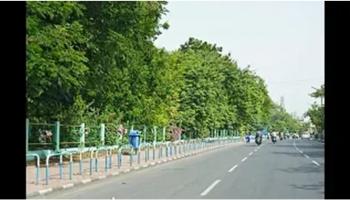/topics/water-management
Water Management
Geomorphologic and land use planning for Danda watershed in Tehri Garhwal district, Uttar Pradesh
Posted on 11 May, 2009 04:26 PMThis study by the National Institute of Hydrology deals with the geomorphologic & land use planning for Danda watershed in Tehri Garhwal district of Uttar Pradesh.
Micro-watershed development plans using remote sensing and GIS for Shetrunji river basin in Bhavnagar district, Gujarat
Posted on 11 May, 2009 04:21 PMMicro-watershed level planning requires a host of inter-related information to be generated and studied in relation to each other. Remotely sensed data provides valuable and up-to-date spatial information on natural resources and physical terrain parameters.
Remote sensing based rapid watershed health appraisal: a case study of Rajasthan by national watershed development project for rainfed areas (NWDPRA)
Posted on 11 May, 2009 04:14 PMThis study presents a remote sensing based rapid watershed health appraisal of NWDPRA watersheds of Rajasthan. The study area is distributed across 8 agro-climatic zones ranging from desertic western plain to humid southern and south-eastern plain. The satellite data prior to treatment year (1988) was compared with post-treated year (1996), to reveal the noticeable changes over a span of 8 years.
Markets for watershed protection services and improved livelihoods in India: a policy brief by Winrock International India
Posted on 11 May, 2009 04:05 PMThe study is based on a scoping study on ‘Developing Markets for Watershed Protection Services and Improved Livelihoods in India,’ which Winrock International India (WII), New Delhi, undertook as part of a larger international study being carried out by the International Institute for Environment and Development (IIED), London.
Institutional history of watershed research in India - the evolution of ICRISAT's work on natural resources in India
Posted on 11 May, 2009 03:57 PMThis report titled "Institutional History of Watershed Research in India - The evolution of ICRISAT's work on natural resources in India", by Dr C Shambu Prasad, A J Hall and S P Wani, published by ICRISAT, is a case study of watershed-based development initiatives at the International Crops Research Institute for the Semi-Arid Tropics (ICRISAT). It seeks to reveal the way scientists and development practitioners work and how they are shaped by the diversity of partners involved and thereby draw process lessons for ongoing and future work on watersheds in international agricultural research centers (IARCs).
Feasibility of payments for watershed services - a report by CISED and NIVA
Posted on 11 May, 2009 03:43 PMThis report in two parts titled "Feasibility of Payments for Watershed Services" is an outcome of a literature review taken up as part of the India PES Project, a collaborative initiative of CISED and NIVA.
Common principles for watershed development from the National Institute of Agricultural Extension Management
Posted on 11 May, 2009 03:06 PMThis deals with the common principles for watershed development at the National Institute of Agricultural Extension Management. For some time now the need has been felt to bring about convergence and harmonization in the implementation of various watershed development projects.
National rural employment guarantee act (NREGA) - a watershed works manual by Samaj Pragati Sahayog
Posted on 11 May, 2009 02:46 PMThis Watershed Works Manual for the National Rural Employment Guarantee Act (NREGA) programme was prepared by Samaj Pragati Sahayog at the request of the Union Ministry of Rural Development. It is meant for those individuals and organisations who will be involved in planning, implementing and/ or monitoring NREGA.
Improving flood management and water quality: a case study of Chicago, United States of America
Posted on 11 May, 2009 02:23 PMThese presentations deal with a case study of the work done in Chicago City in the United States of America to improve flood management and water quality. In order to save construction costs, the reservoir side walls are composed of geomembrane liner over compacted clay.
Earthen dams - a mulitmedia course
Posted on 11 May, 2009 01:22 PMEarthen dams are a very common and cost-effective watershed intervention. This multimedia course gives an understanding of the principles of earthen dams, the types of earthen dams and the parameters to be considered in their construction. It goes into the detail of the steps to be followed in constructing these dams.







